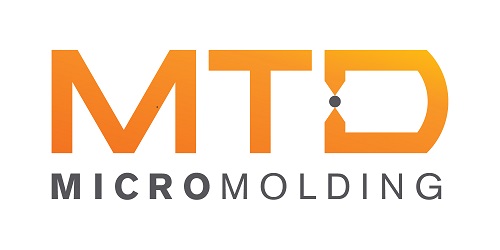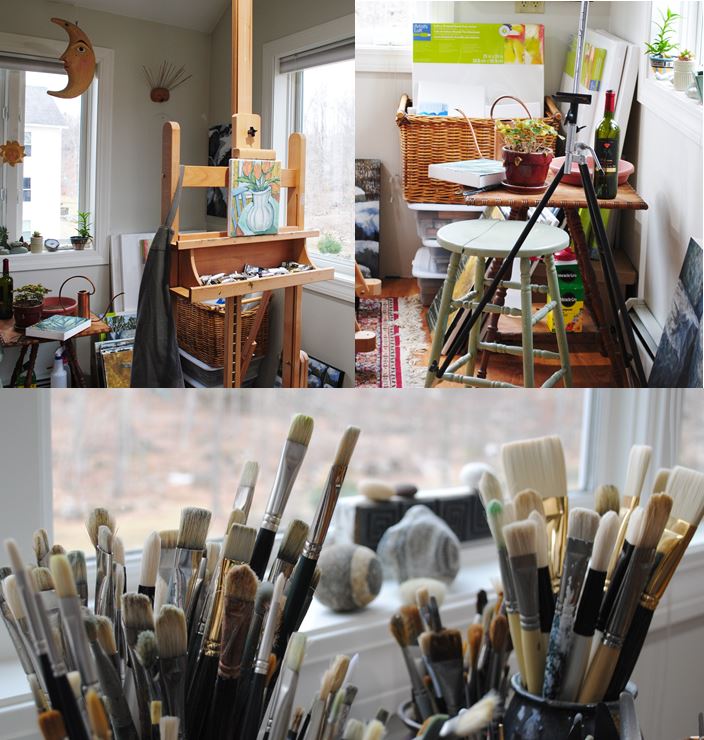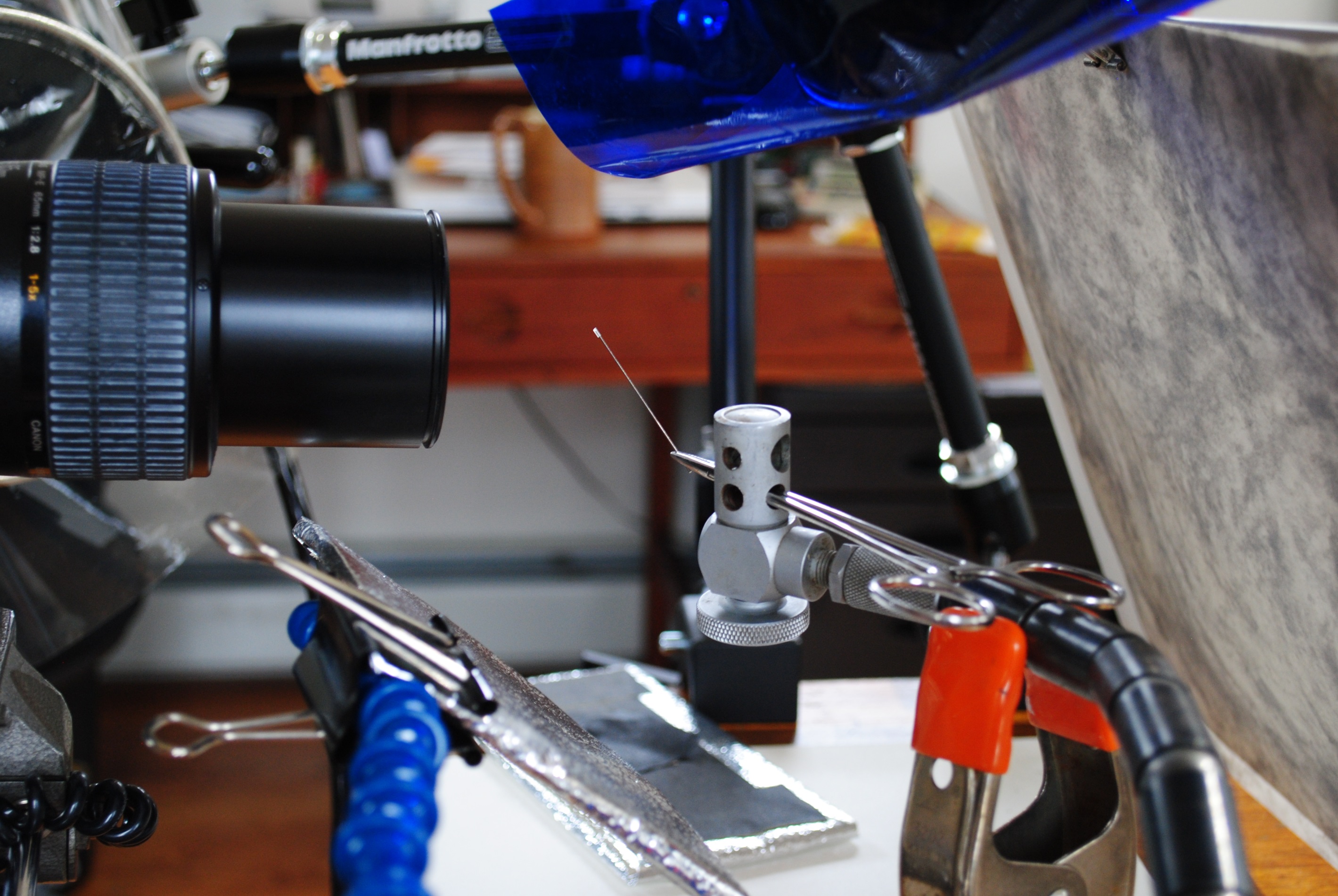When our part photographer tried to explain his process for photographing our tiny parts to our team at MTD, we all thought we understood. But it is truly something you have to see to really understand and appreciate.
I was able to get a real appreciation for the art of micro photography and our photographer’s specialized process during a visit to his studio. Located in rural Sturbridge, Bob’s studio setting resembles the opposite of what one might think for micro medical device component photography. His quaint studio is filled with natural light, antique furniture, baskets of blank and painted canvases, an easel for his wife’s painting, hand-painted stones… and his special tools for micro medical part photography.
With his loyal dog, Bean, by his side, Bob walked me through the process of getting our micro part ready for its close-up. Once the part was anchored with forceps and oriented correctly in the vise, we set up the miniature “stage” where the parts would be photographed. Only measuring about 2’x1’, the stage is complete with a custom background, multiple types of lighting, reflector tools, and various other components that are constantly adjusted to create the best shot possible.
After the “stage” setup, lighting system setup, and multiple photos taken, the images are then run through special software on his computer to produce the images that we see and use in our marketing materials. Bob and I worked for about two hours on setting up, shooting, and finalizing the photo file for one part, at which time Bob decided he was going to attempt the shot again the next day to try to get a “better” product. This amazed me because the photo looked incredible as is. All of this work for one little part!
Here at MTD, we take our part photography very seriously because it is our primary medium for visually sharing our capabilities with the medical device world. Our photographer’s special techniques allow each photo to tell a story for each individual piece. Over the years, we have learned the importance of focusing on the details of the medical implants and not muddying the waters with extraneous objects in the photos that don’t help tell the story. Like micro molding, the art of micro photography is highly complex wherein the right mix of tools and experience is required in order to produce a successful and superior product.
“An image has to tell a story and to tell the correct story is like writing haiku, just the right elements in balance and arranged precisely”. – Bob Arnold





